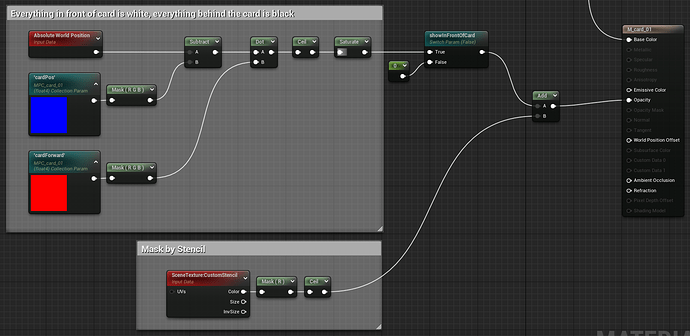Stencil Buffer Test with a small extra detail: Elements can leave the stencil area.
This is done by adding everything in front of the card to the stencil mask. For this to work I store pos + front facing vector via Blueprint:
In the material I then mask out the front/back area of the card with a simple dot product:
Little list of inspirations for later:
- https://twitter.com/Lasphir/status/1618298181154115585
- https://www.artstation.com/artwork/WK5JYQ
- https://www.artstation.com/artwork/L3d6Yr
- https://www.artstation.com/artwork/nE5WL6
- https://www.artstation.com/artwork/8wg2aq
- https://www.artstation.com/artwork/9mvAky
- https://www.artstation.com/artwork/3oA9YA
- https://www.artstation.com/artwork/8wgXYx
- https://www.artstation.com/artwork/OokRVK
Dragon Breath:
- XL18 Flamethrower!!! - YouTube
- Lost Ark Monster Kaishtter Skill FX - YouTube
- Unreal Engine 4 - Dragon Breath Fire Effect - YouTube
- Dragon Breath Making of - YouTube
- https://www.artstation.com/artwork/Arleo5
- https://www.artstation.com/artwork/oVmmJ
- Game of Thrones - Season 7 | Breakdown Reel | Image Engine VFX - YouTube
- https://www.artstation.com/artwork/Len4aK


